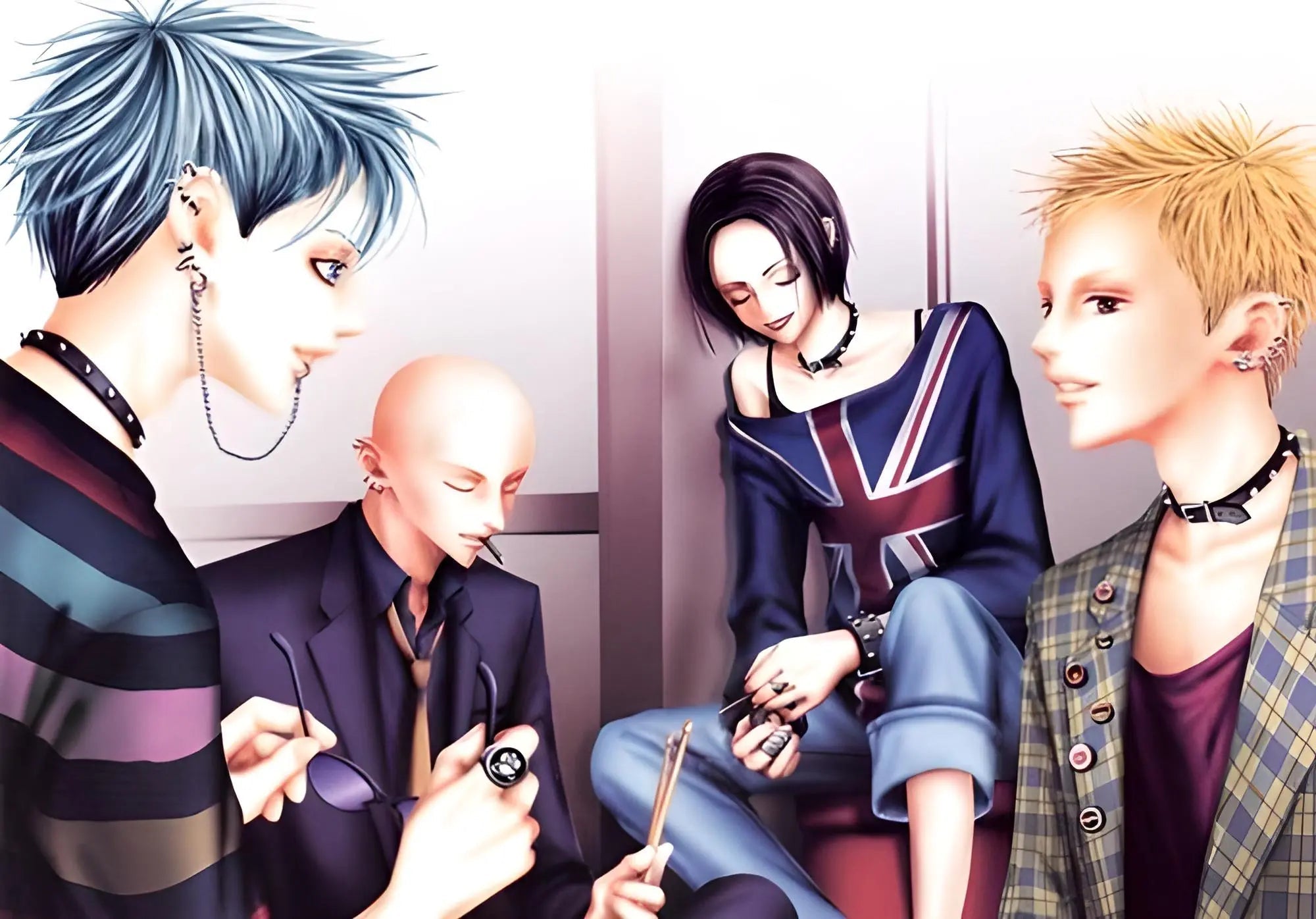
Celebrating Punk Fashion: NANA
A Story of Coincidence, Fashion, and Punk Identity
Nana, Ai Yazawa’s landmark 2000s josei manga, which later became a beloved anime, is a profound exploration of self-identity and emotional conflict. Through the lens of fashion, it offers insight into the characters’ inner struggles, ranging from hopeful aspirations to unresolved emotional wounds. The fashion showcased in Nana draws inspiration from Harajuku subcultures like gyaru and mori girl, paired with the bold, avant-garde designs of Vivienne Westwood. Westwood’s punk aesthetic, which became influential in Japan during the '90s and early 2000s, is woven throughout the story, enhancing the narrative’s emotional depth.

Ai Yazawa, who once studied fashion before deciding to pursue illustration, integrates her understanding of design into the world of Nana. She uses clothing not just as decoration, but as a means of communicating the complexities of her characters' emotional landscapes.
Both the manga and anime delve into universal themes like intimacy, trauma, and self-empowerment, offering a more nuanced perspective on punk identity and love than many other works in the romance genre. Nana serves as both a visual and emotional snapshot of Y2K Tokyo, providing a unique commentary on fashion trends of the time, and it stands as a heartfelt tribute to Vivienne Westwood.

Nana Osaki: Punk Fashion as a shield?
Nana Osaki’s punk style is not just a fashion statement—it’s an extension of her personality. Her preference for Vivienne Westwood’s designs is a reflection of her connection to the rebellious punk scene. A notable example is the “Armour” ring, a recurring piece in both the manga and anime, which some fans interpret as an emotional shield—a way for Nana to protect herself from the harsh world around her.

Nana Osaki’s wardrobe is dominated by elements from Westwood’s collections, particularly the Anglomania line from the early '90s, featuring tartan patterns and structured blazers, alongside corset tops and Victorian-inspired skirts. These pieces symbolize her connection to punk's past while embodying her emotional armor.

However, the tough exterior Nana presents is a mask for deeper vulnerabilities. Her chains, leather jackets, and rebellious attire are not just about looking tough—they serve as protective layers, shielding her from past emotional wounds related to abandonment and dependency. Nana’s punk aesthetic defies conventional gender norms in manga, challenging the expectation that female protagonists must adhere to traditional femininity.

Nana Komatsu: A Constant Reinvention Through Fashion
In contrast to the other characters, Nana Komatsu (or Hachi) embodies a more fluid and inconsistent approach to both her personal identity and style. Initially driven by the need for validation from her romantic relationships, Hachi’s fashion evolves as she seeks to define herself outside of her attachments to men. Her wardrobe frequently changes, reflecting her fluctuating sense of self-worth.

At the start, Hachi’s style is bohemian and laid-back, featuring 70s-inspired loose pants and scarves. But as she grows closer to Nana Osaki and the band Black Stones, her fashion evolves to include Westwood jewelry, signaling her gradual immersion into the world of punk and artistic self-expression. Her clothing choices often reflect her search for validation, as she tries to navigate her own desires while also fitting into different social roles. Her preference for soft, pastel housewife-inspired dresses reveals her ongoing internal struggle between embracing femininity and seeking independence.

Ren Honjo: Punk Love with a Sid Vicious Twist
The relationship between Nana Osaki and Ren Honjo evokes strong parallels to the notorious bond between Sid Vicious of the Sex Pistols and his girlfriend Nancy Spungen. Both relationships are marked by intensity, obsession, and emotional volatility. Ren’s admiration for Nana borders on fixation, and his leather attire and padlock necklace mirror Sid Vicious’s iconic punk look—an homage to his toxic connection with Nancy.

Nana doesn’t glorify this obsessive love; instead, it serves as a cautionary tale. The anime and manga highlight how external glamor can often mask unhealthy dependencies, showcasing the darker side of romance and the emotional turbulence that comes with it.
Shinichi Okazaki: Rebellion Through Fashion
Shinichi Okazaki, Black Stones's bassist, exemplifies the role of fashion in signaling one's transition into a subculture. His journey from a typical high schooler to a punk is marked by his adoption of Vivienne Westwood’s designs—particularly those from Westwood’s 1971 political collection and the controversial 1974 Bondage collection. These choices reflect Shinichi’s desire to reinvent himself, moving away from a troubled past and embracing a more mature, rebellious identity.

His punk persona is not just about fashion; it’s an escape from his painful childhood, with each piece of clothing acting as both a shield and a declaration of independence. Shinichi’s fashion choices underscore the emotional toll of growing up too fast, driven by the need to break free from past trauma.

Nana Forever at ICHIGOODESIGN:
At ICHIGOODESIGN, Nana is not just a manga; it’s a timeless exploration of identity, self-determination, and the tension between internal desires and external pressures.
We wanted to recreate this punk influence you can find in Nana by designing clothes in a punk style but easy to wear with minimalist references to the manga.







